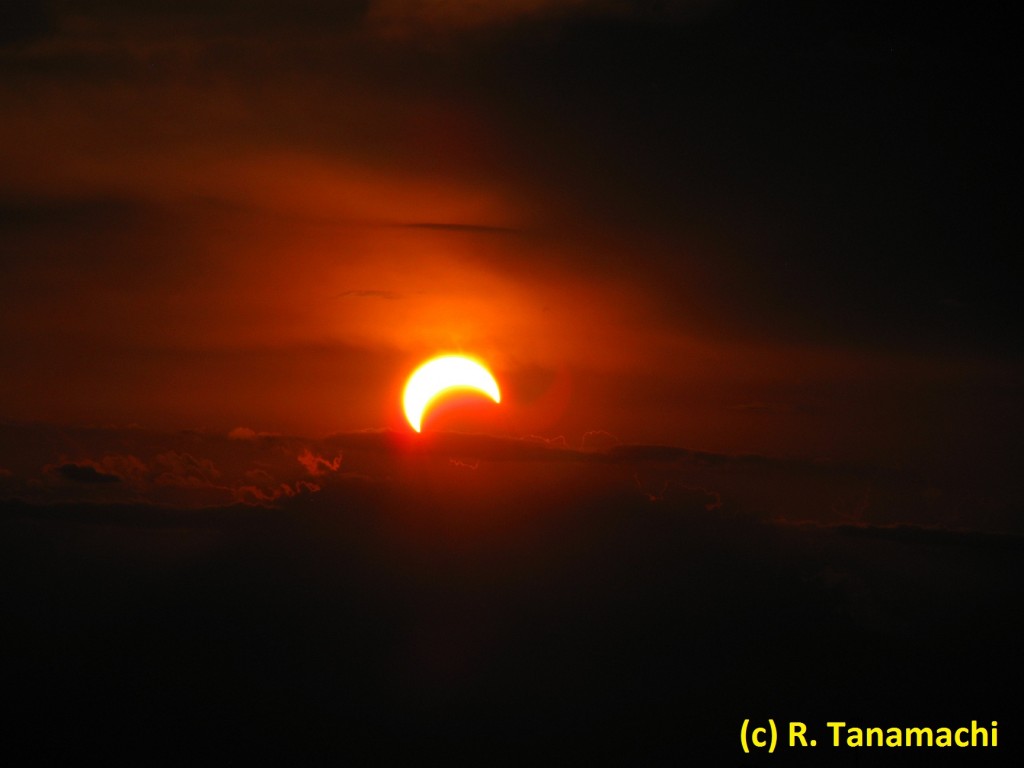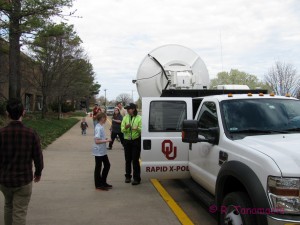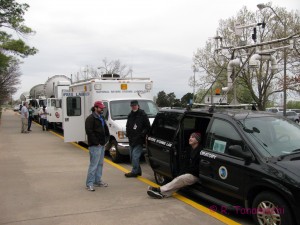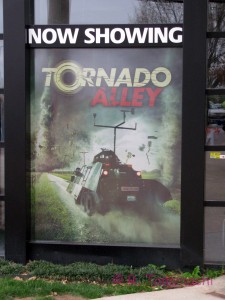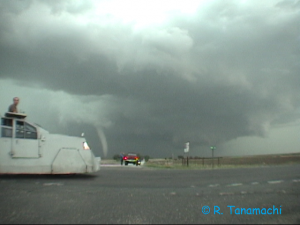Sadly, at least one person perished today in an incident involving a car fire inside the dock area of the National Weather Center. A photograph I took of the burning vehicle has been retweeted hundreds of times and appeared on a number of major news outlets accompanied by information of varying accuracy. I want to set the record straight about a couple of things I’ve heard and read regarding the image.
1. I didn’t actually witness the incident. At about 3:35 p.m., I came out of my 4th floor NWC office to refill my tea kettle, and noticed a group of people, including my husband, looking and pointing at something outside the bay windows on the northeast side of the building. I could see smoke billowing from somewhere southeast of the building, but couldn’t see the source, and decided to look out the window on the end of the east wing. When I got there, I fully expected to see a grass fire on Hwy. 9 (as often happens when people carelessly flick cigarette butts out their car windows). Instead I was astonished to see this scene in our own dock area:
The "unsafe condition" on the E side of the NWC. #fire pic.twitter.com/kE1Qzm9E1t
— Robin Tanamachi (@tornatrix) April 23, 2015
2. I didn’t break any rules or disobey any instructions to get the image. As I took the photo, the PA finally chimed on: “May I have your attention, please. An unsafe condition has been reported on the east side of the building. Please move toward the center of the building.” For those not familiar with the NWC, it is an L-shaped building with wings pointing toward the north and east, and an atrium area at the elbow. I tweeted the image as I was walking away from the east window, toward the atrium, because I knew all my colleagues in other parts of the building would be wondering what the ambiguous “unsafe condition” was. I wanted to give them a way to see what was happening without having to look for themselves.
3. The image is indeed mine. My husband, who was standing right next to me, took his own photo within seconds of mine, also tweeted it, and it was also used by a number of news outlets. It looks nearly identical, but some details (such as the position of the police officer standing just outside the gate) are different.
Car on fire at the #NWC. Looks liked it crashed through the gate. Not good… pic.twitter.com/En0cKcCCCV
— Daniel T. Dawson II (@Meteodan) April 23, 2015
4. The radar trucks in the upper left part of the image are SMART-Rs, not DOWs. SMART-Rs (Shared Mobile Atmospheric Teaching and Research Radars) operate at C-band and are jointly owned and operated by OU, NSSL, Texas Tech, and Texas A&M. DOWs (Doppler on Wheels) operate at X-band and are owned and operated by the Center for Severe Weather Research in Boulder, Colorado. Although the two types of radars are used for similar severe storms research (and both operated together in VORTEX2), they represent two separate research groups.
5. The building was never evacuated. We were advised to move to the interior and shelter in place. This was likely done to prevent anyone trying to evacuate through the dock area.
6. I don’t know any more than you do about what happened. The only verifiable facts are that the car rammed through the gate (as is evident in the photo), the car burned, and one (male) person died (stated by Norman FD to several local media outlets). As of this writing, more than six hours after the incident, the bomb squad is still working on the burnt-out car. Beyond that, I consider any information about details, cause, motive, or extenuating circumstances to be only rumors and speculation. I’m satisfied to let the investigators do their jobs and notify the next of kin (who are doubtless in shock). I await a formal statement from OU Public Affairs about this incident.
